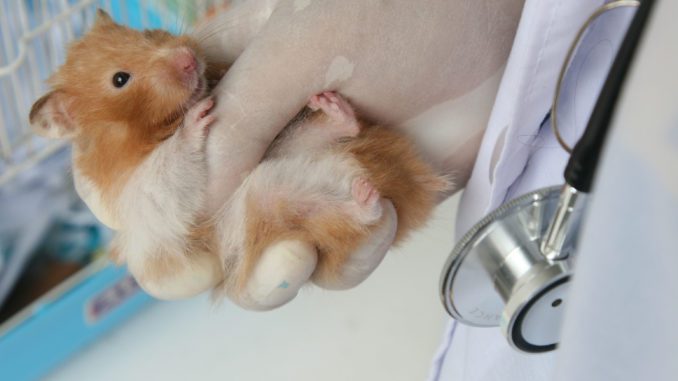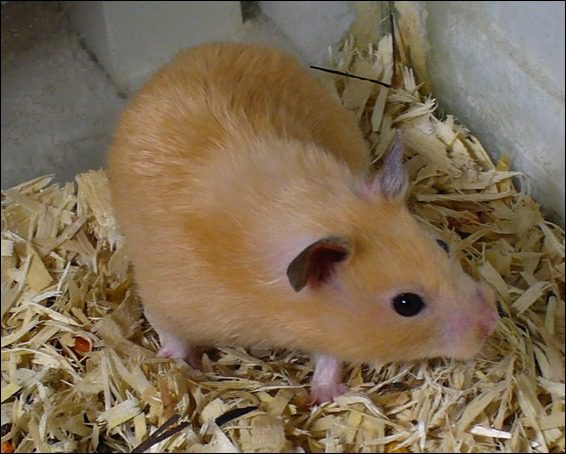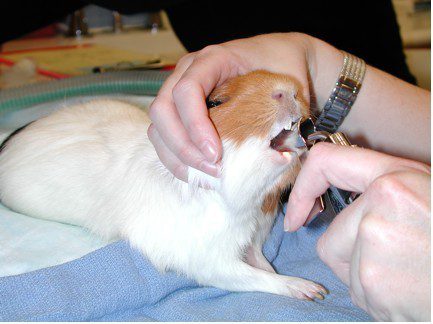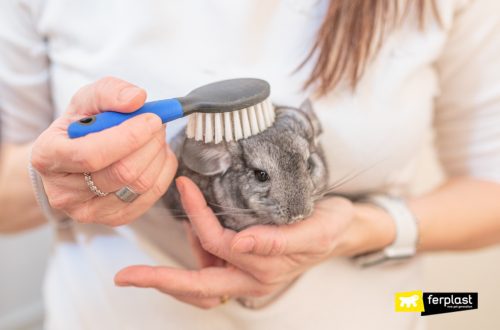
Allergy to hamsters in children and adults, symptoms

Allergies are a common phenomenon that a person sometimes has to deal with when dealing with pets. Allergic reactions are often found among cats and dogs, but medical practice also talks about other people involved in the home menagerie. Allergy to rodents that live in the house as pets has ceased to be a rarity. Whether there is an allergy to hamsters in children or adults, and how to deal with it – we tell below, without missing a single detail.
Contents
What causes allergies?
There are many opinions about whether a hamster allergy can occur, but they are often incorrect, as the vast majority of pet owners believe that allergic reactions occur through contact with their pet’s fur. Veterinarians also remind of the biological environment, because the urine and saliva of a hamster, including the Dzungarian, is no less dangerous for the manifestation of allergies. In the outer particles of the skin, as well as in the saliva of dogs and cats, there is a protein that causes high sensitivity in allergy sufferers with all the consequences. Hamsters have distinguished themselves somewhat: an allergy to Dzungarian and any other rodents is provoked by a protein contained in the urine, saliva, sweat glands and on the skin scales of the animal.
It is worth noting that Syrian hamsters with their counterparts are not hypoallergenic. Even individual breeds of hairless rodents can lead to the development of allergic reactions. Intending to get a pet, it is better to find out in advance whether an adult or a child with whom he will live is allergic to hamsters.
Syrian hamsters with their counterparts are not hypoallergenic. Even individual breeds of hairless rodents can lead to the development of allergic reactions. Intending to get a pet, it is better to find out in advance whether an adult or a child with whom he will live is allergic to hamsters.
You can conduct a laboratory study at a specialized medical center, where you will be asked to do a sensitivity test. The procedure is unpleasant, but effective. In the interval from the elbow to the wrist, the doctor draws a scraper along the inside of the arm, creating small scratches, on which he applies a drop of the allergen. Waiting for a reaction takes about 20-30 minutes, after which the hand is examined and allergic risks are established. A slight swelling or reddened skin at the site of the test means a positive reaction, and therefore it is better to refuse or get rid of the hamster if it has already been acquired.
About the causes of allergies
Among the common causes of allergic reactions to Djungarian, Syrian and other breeds of hamsters, we can note:
- a weakened immune system;
- development of genetic factors;
- idiosyncrasy;
- the presence of chronic diseases;
- contact with saliva, urine or skin scales of the animal.
Most often, a child who spends a lot of time with a hamster, unlike an adult, is exposed to allergenic effects. Sometimes hamsters, during an active game, or being frightened, bite the owner, opening a free path for the allergen into the circulatory system, followed by the development of allergy symptoms.
It is important to note that in most cases a child is allergic to jungars. The reason lies in the cleanliness of the breed, its beauty and the absence of unpleasant odors, which attracts potential hamster owners. Due to the imaginary hypoallergenicity, many buyers do not think about the possible risks that may lead to the development of a reaction in a child and an adult.
Features of the manifestation of allergies
Erroneous assumptions about the disease, the symptoms of which are caused by hamster hair, are not confirmed in medical practice. The bulk of the allergens are found in the urine and saliva of rodents, unlike common cats or dogs. For this reason, a dzhungarik or any other hamster, including the Syrian, cannot be hypoallergenic. Contrary to this fact, a person does not often think before buying an animal whether his child may be allergic to hamsters until he encounters the first symptoms of its manifestation.
The provoking protein, entering the human body, activates the immune system, which immediately tries to attack the pathogen. At this point, a substance called “histamine” is produced and enters the circulatory system, causing unpleasant symptoms in the form of an unreasonable cough or sneezing. The most dangerous manifestation of the body can be anaphylactic shock, which begins with irritation of the skin, then proceeds to vomiting, swelling and shortness of breath.
Allergy to hamsters: symptoms

The reaction to hamsters in symptoms practically does not differ from other types of allergies, since at the initial stage, areas of the skin and the human respiratory system are affected. The clinical picture, characteristic of the symptoms, looks like this:
- redness of the skin around the eyes;
- lacrimation is noted;
- allergic rhinitis develops;
- breathing becomes difficult, becomes wheezing;
- possible signs of suffocation;
- dry cough accompanied by sneezing;
- general weakness of the body;
- there is a headache and joint pain;
- small rashes on the skin;
- severe skin itching.
The rapid and severe progression of allergy symptoms can lead to anaphylactic shock or Quincke’s edema, leading to paralysis of the respiratory muscle. Critical conditions are very life-threatening and require immediate medical attention.
People with an asthmatic spectrum of diseases should be especially careful, since it is not known how an allergy to a hamster can manifest itself in this situation.
If you notice the slightest signs of an allergy, do not postpone a visit to the doctor, because the timely help of an allergist or dermatologist will contribute to a quick diagnosis and the necessary therapy. It is advisable to find new owners for the rodent on the same day and not be near the source of the disease. Remember that during and after therapy, the hamster can also cause allergies.
How to cure rodent allergies
About how to get rid of allergies to various hamsters, special diagnostics can tell based on laboratory tests, anamnesis information and a visual examination performed by the attending physician. Only a full range of medical measures will allow you to draw up an individual treatment regimen that will help get rid of the consequences of allergies. Do not forget about the need to exclude contact with allergenic hamsters, including being in the same room with a rodent. Try to quickly find new owners for your pet, then recovery will be significantly accelerated.
Medication treatment includes:
- Taking antihistamines to relieve swelling and reduce itching. Often the doctor prescribes effective remedies like Telfast or Claritin, which are well tolerated by the body without causing side effects. Do not self-medicate, since the dosage must be calculated according to individual parameters, taking into account the age and weight of the person.
- To increase the immune defense of the body, it is recommended to take the immunomodulators “Timolin”, “Likopid”, “Derinad” and a number of other drugs. The appointment can occur in the form of aerosols, drops for the eyes and nose. Often, immune substances are recommended to be used even after recovery in order to strengthen the defense systems, which helps prevent allergy relapses.
- To help the body remove toxins more efficiently, it is recommended to take enterosorbents, which are part of activated carbon or Lingin. The therapeutic effect of drugs significantly reduces the pronounced signs of allergy in a child and an adult.
- In severe cases, treatment is carried out with hormonal drugs like Prednisolone or Cetirizine to quickly get rid of negative symptoms. Hormonal remedies are not suitable for long-term treatment, as they have a lot of side effects, but people with allergies will benefit from replenishing their home first-aid kit with one of the emergency drugs.
With the treatment of an unpleasant disease, specific immunotherapy (SIT-therapy) successfully copes, with the help of which the body is accustomed to the method of microscopic introduction of allergens, gradually increasing their concentration. Practice shows a high percentage of positive results with a long period of remission. Carrying out special therapy is possible only under the guidance of the attending physician and in the amount of 2-3 courses in order to achieve a stable result.
Depending on the degree of symptoms that appear, the doctor prescribes antipyretic drugs, and with the development of painful sensations, he prescribes analgesics and antispasmodics.
preventive measures
An allergy to a hamster does not always force owners to part with their pet, so in such a situation it is necessary to take into account a number of preventive measures that will help to communicate with the rodent as painlessly as possible. So:
- At the end of feeding or after cleaning the hamster’s cage, wash your hands thoroughly and disinfect all exposed areas of the body well. This can be done with the help of special tools or antibacterial soap. You can not stay close to your pet for a long time.
- For 2-3 times, regularly ventilate the room in which the cage with the rodent is located. It is advisable to wipe the dust daily and do wet cleaning.
- When cleaning the cage, pay special attention to the hamster’s sanitary area, which must be washed with special care.
- If possible, it is best to entrust the care of a hamster to a family member who is not prone to allergies.
Don’t ignore f observance of preventive rules when dealing with a rodent, since protective measures will help not only prevent the development of symptoms, but in some cases avoid unpleasant symptoms. If a Syrian hamster or a rodent of another breed has caused an allergy with the necessary measures, immediately seek medical help. A timely study and the appointment of medical therapy will save you from serious consequences, while maintaining good health.
f observance of preventive rules when dealing with a rodent, since protective measures will help not only prevent the development of symptoms, but in some cases avoid unpleasant symptoms. If a Syrian hamster or a rodent of another breed has caused an allergy with the necessary measures, immediately seek medical help. A timely study and the appointment of medical therapy will save you from serious consequences, while maintaining good health.
Is it possible to be allergic to hamsters?
3 (60.31%) 64 votes





